
For the next 38 hours GOG is giving away Shadow Warrior 2 for free!
Go to https://www.gog.com/#giveaway and get your free copy today!


For the next 38 hours GOG is giving away Shadow Warrior 2 for free!
Go to https://www.gog.com/#giveaway and get your free copy today!
; LOGO Language Interpreter for the Apple-II-Plus Personal Microcomputer ; Written and developed by Stephen L. Hain, Patrick G. Sobalvarro, ; and the M.I.T. LOGO Group, at the Massachusetts Institute of ; Technology.
It’s over on github:Â https://github.com/PDP-10/its/blob/master/src/aplogo/logo.958
When I’d bought this 1020 in question, I picked it up from an AT&T customer with the intention of basically using it as a camera. Well it was kind of okay but it had been upgraded to Windows 10, which technically is unsupported on the 1020 hardware. And no wonder as the 1020 specific camera applications aren’t available, nor is performance all that great on Windows 10. I’m guessing there is a laundry list of reasons of why Windows 10 was not available for the 1020.
So I saw this website, lumiafirmware.com that not only has an incredible amount of firmware saved, but it sure makes the process of loading different firmware pretty simple.
Really doesn’t that sound not that difficult at all?!
Except it wasn’t.
Looking at the incredibly extensive list, I see that the AT&T 1020 phone in yellow colour is the RM877. So I download the appropriate ffu image and run:
thor2 -mode uefiflash -ffufile RM877_3051.50009.1451.1_RETAIL_nam_att_205_01_473928_prd_signed.ffu -do_full_nvi_update -do_factory_reset
A bunch of verbose output happens and then:
Start sending payload data V2Sbl in async mode... Percents: 0 Device responded a message that has invalid size! Expected: 16, Received: 0 Exception during programming: 262150 Safe write descriptor index reached: false Payload data transfer speed (0.22 MB/s) Elapsed time 40.83 sec Payload data size 9.000123 MB [IN] programSecureFfuFile. Closing RM877_3051.50009.1451.1_RETAIL_nam_att_205_01_473928_prd_signed.ffu programming operation failed! Operation took about 1 minute, 6 seconds. Average transfer speed was 0.11 MB/s. Unknown error code. THOR2 1.8.2.18 exited with error code 262150 (0x40006)
Unknown error code! What the hell does that mean?
Glancing over at the phone I’ll show you what it means.
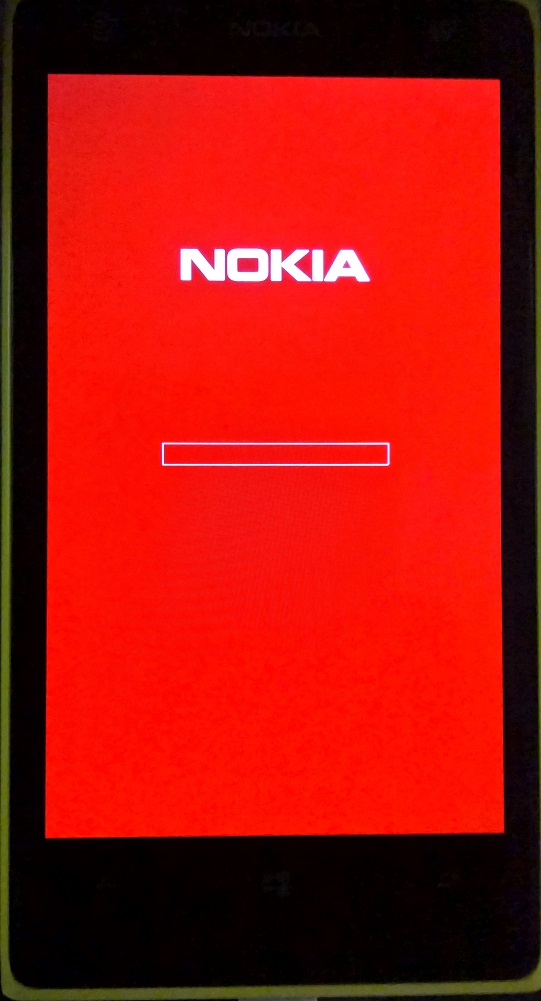
So the phone was stuck at the red screen waiting to be programmed, but obviously that failed. Re-running the programmer just gave me this:
Detecting UEFI responder Send HELLO Send HELLO Send HELLO Send HELLO Send HELLO Lumia UEFI Application did not respond to version info query Device is not in Lumia UEFI mode Reading device mode failed Failed to detect UEFI responder. 84017 THOR2_ERROR_TO_COMMUNICATE_WITH_DEVICE THOR2 1.8.2.18 exited with error code 84102 (0x14886)
So I thought I’d hold down the volume down button & power and do a reset. Except now my device was nearly bricked. The display wouldn’t turn on at all, and there was no haptic feedback on powering up and or down.
HOWEVER plugging in the USB would make the connection noise, and how me a “QHSUSB_DLOAD” device. So I could try to talk to it in emergency mode.
Apparently on the same download page, there is a hex file and a mbn file. Downloading those and running:
thor2 -mode emergency -hexfile FAST8960_EOS_NAM.hex -mbnfile RM877_msimage_v1.0.mbn -orig_gpt
And this looked like it was going to work… but then as always it failed.
Sending OPEN_MULTI_REQ Received valid response to OPEN_MULTI_REQ Programming image R Image opened successfully for reading SAFE hex file was used and unallowed memory address was being written. Reset the device and use the correct HEX file. ALPHA EMERGENCY FLASH END Emergency messaging closed successfully Operation took about 11.00 seconds. Unknown error code. THOR2 1.8.2.18 exited with error code 85034 (0x14C2A)
Use the correct HEX file? But it was the one that I downloaded from the right page! Great now my phone is dead. Unplugging it in and out however gives me a little hope as it’s still showing up as a QHSUB_DLOAD device.
After a lot of searching I see Joemar Serrato went down the same road, and they did something weird where they split out the mbnfile from the ffu file themselves. So I ran the following command to split out the mbn files:
thor2 -mode ffureader -ffufile RM877_3045.0000.1325.0001_RETAIL_nam_att_205_01_223461_prd_signed.ffu -dump_gpt -filedir gpt
And now I had 2 files.
10/04/2018 06:53 PM 17,408 GPT0.bin 10/04/2018 06:53 PM 17,408 GPT1.bin
Now with all that drama I could re-run the emergency mode flash
thor2 -mode emergency -hexfile FAST8960_EOS_NAM.hex -mbnfile gpt\GPT0.bin -orig_gpt
Sending OPEN_MULTI_REQ Received valid response to OPEN_MULTI_REQ Programming image g Image opened successfully for reading Uploading MBN image 70 SAFE hex file was used and unallowed memory address was being written. Reset the device and use the correct HEX file. ALPHA EMERGENCY FLASH END Emergency messaging closed successfully Operation took about 11.00 seconds. Unknown error code. THOR2 1.8.2.15 exited with error code 85034 (0x14C2A)
And it appeared nothing changed at all. Great. In disgust I unplug the phone and hold down the volume down & power button for 15 seconds, but this time it vibrated. I couldn’t believe it! Within a few seconds it powered back up to the red screen, ready to load new firmware!
thor2 -mode uefiflash -ffufile RM877_3045.0000.1325.0001_RETAIL_nam_att_205_01_223461_prd_signed.ffu -do_full_nvi_update -do_factory_reset
Size of system mem: 2097152 KB Send backup to RAM req... Clearing the backup GPT...SKIPPED! Successfully parsed FFU file. Header size: 0x000c0000, Payload size: 0x00000000572e0000, Chunk size: 0x00020000, Header offset: 0x00000000, Payload offset: 0x00000000000c0000 RKH match between device and FFU file! Option: Skip CRC32 check in use Start sending header data… Start sending payload data V2Sbl in async mode... Percents: 0 Percents: 1 Percents: 2 Percents: 3 Percents: 4 Percents: 5
I was astonished! The progress bar was slowly moving, and the phone was doing what it should have been doing about 2 hours ago. I dared not move, so unfortunately I don’t have any pictures.
Payload data transfer speed (9.79 MB/s) Elapsed time 142.41 sec Payload data size 1394.893921 MB Read flashing status.. [IN] programSecureFfuFile. Closing RM877_3045.0000.1325.0001_RETAIL_nam_att_205_01_223461_prd_signed.ffu Get EMMC write speed... Get EMMC write speed, SKIPPED! Get data verify speed... Get data verify speed, SKIPPED! Send restore backup from RAM req... programming operation completed! [THOR2_flash_state] Post programming operations [THOR2_flash_state] Executing factory reset [Factory reset result] 0 Factory reset done [THOR2_flash_state] Executing Full NVI Update Write flash options ( WriteNvi: Full ) Write parameter to device via UEFI Flash App Write parameter Ok Flash options set successfully. [Full NVI update result] 0 Operation took about 2 minutes, 24 seconds. Average transfer speed was 10.16 MB/s. Exited with success
And then just like that, the phone rebooted itself, and then brought itself up to the ‘green screen’
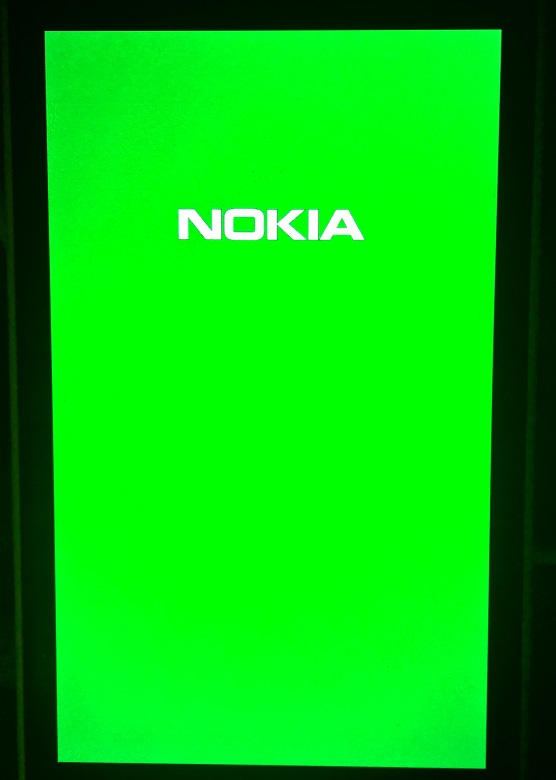
All that remained to do was to tell the phone to boot up normally
thor2 -mode rnd -bootnormalmode
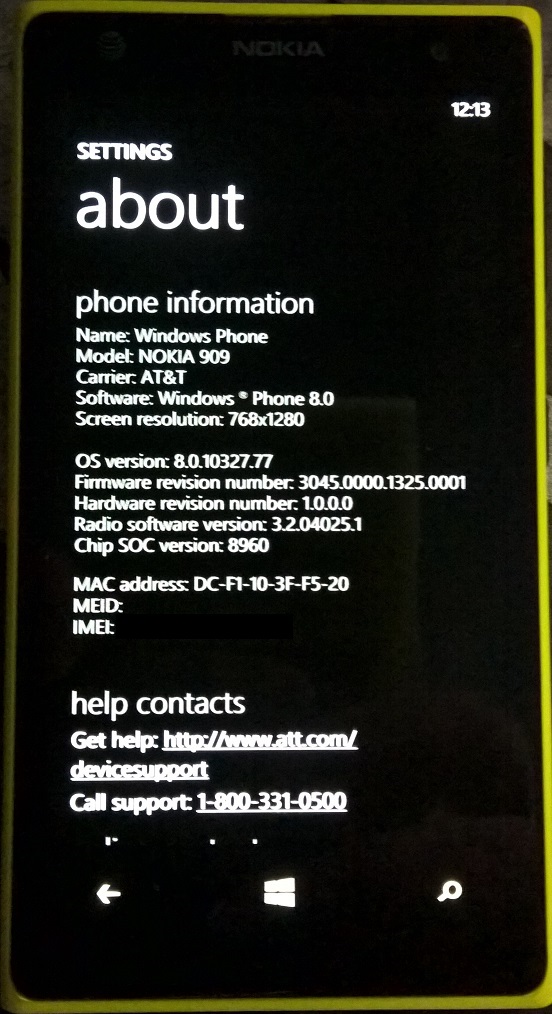
And that was it!
My 1020 is now running 8.0, which includes not only the special Nokia phone apps, but all the AT&T bloatware of 2012. I can’t believe there was a yellow pages app. How are they still a thing?
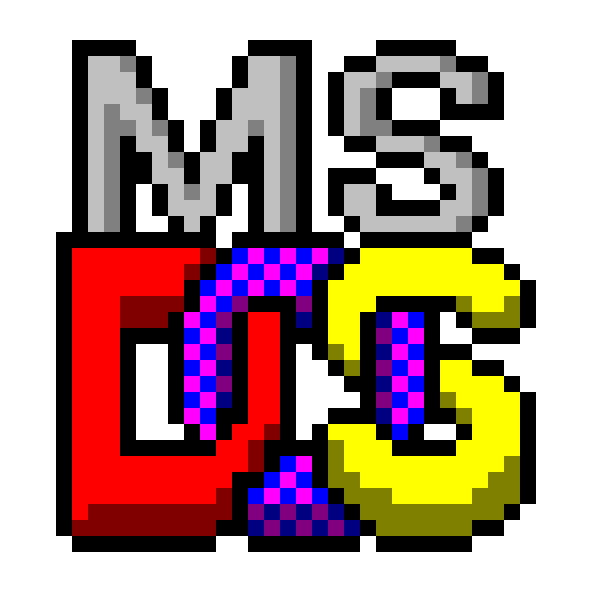
This repo contains the original source-code and compiled binaries for MS-DOS 1.25 and MS-DOS 2.0.
These are the same files originally shared at the Computer History Museum on March 25th 2014 and are being (re)published in this repo to make them easier to find, reference-to in external writing and works, and to allow exploration and experimentation for those interested in early PC Operating Systems.
All files within this repo are released under the MIT (OSI) License as per the LICENSE file stored in the root of this repo.
At first I just thought it was simply just another mirror of the original source that had been released that had some incredible restrictions.
Original license:
To access this material, you must agree to the terms of the license displayed here, which permits only non-commercial use and does not give you the right to license it to third parties by posting copies elsewhere on the web.
However the restrictions have been lifted, and MS-DOS 1.25 & 2.0 are now available under a MIT license.
So this is actually very awesome!
You can download it here:Â https://github.com/Microsoft/MS-DOS.
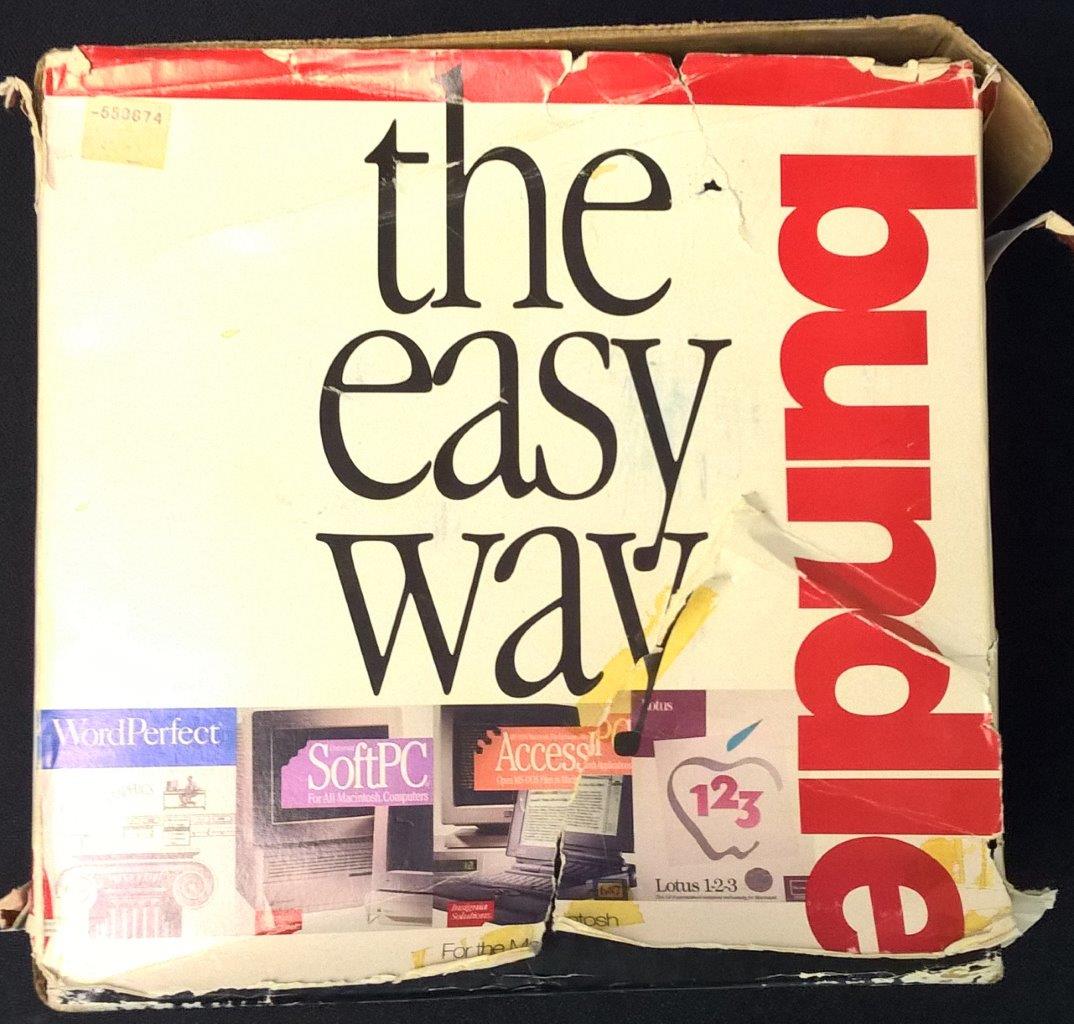
I came across this hefty box, “the easy way bundle”, as it bills itself, the easy way to save over $1,000 on four popular software packages for your new Macintosh computer. Clearly the box has seen better days over the last 27 years but amazingly the contents are just fine.
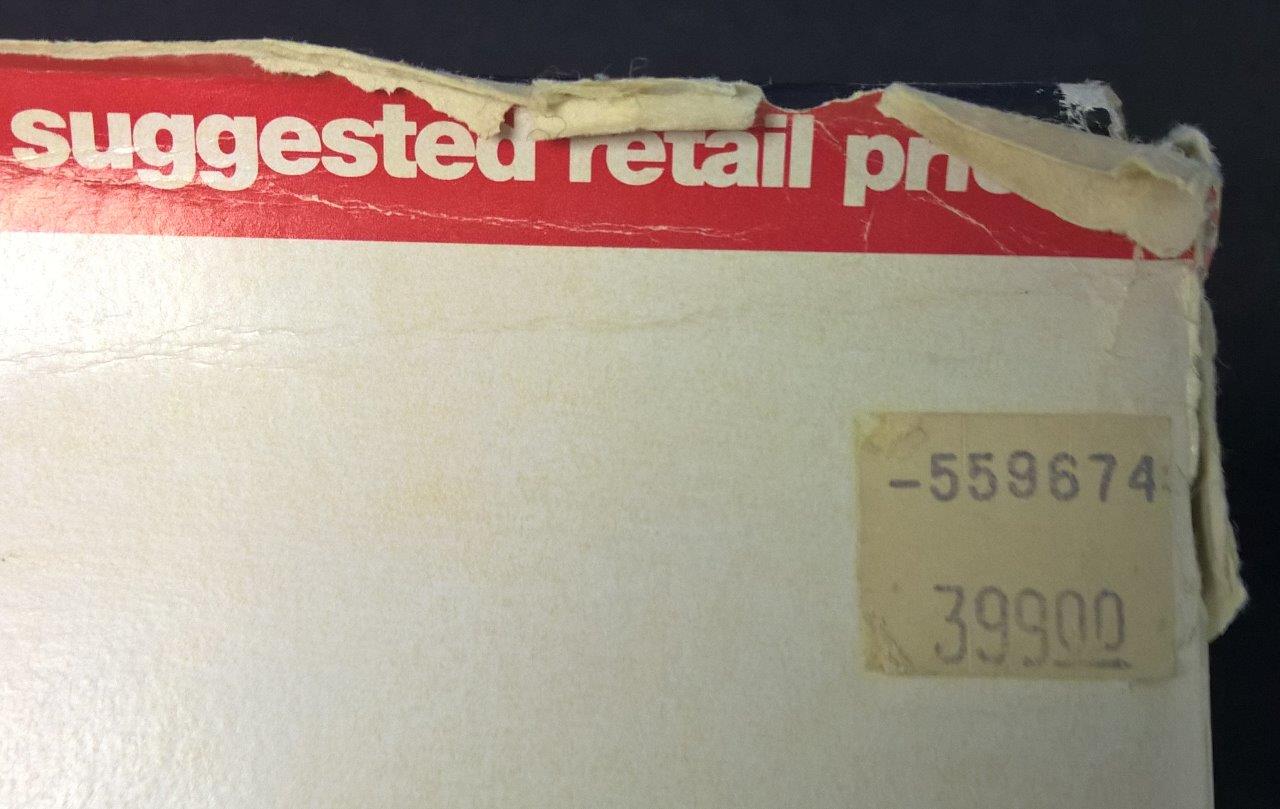
It’s amazing how much more cheaper software has gotten over the years. Software used to be super expensive on the PC level, it really wasn’t until the office bundling with new machines that drove the price down. Back in the 80’s and early 90’s it wasn’t uncommon to pay upwards of $500 USD for a single application, like a spreadsheet or word processor.
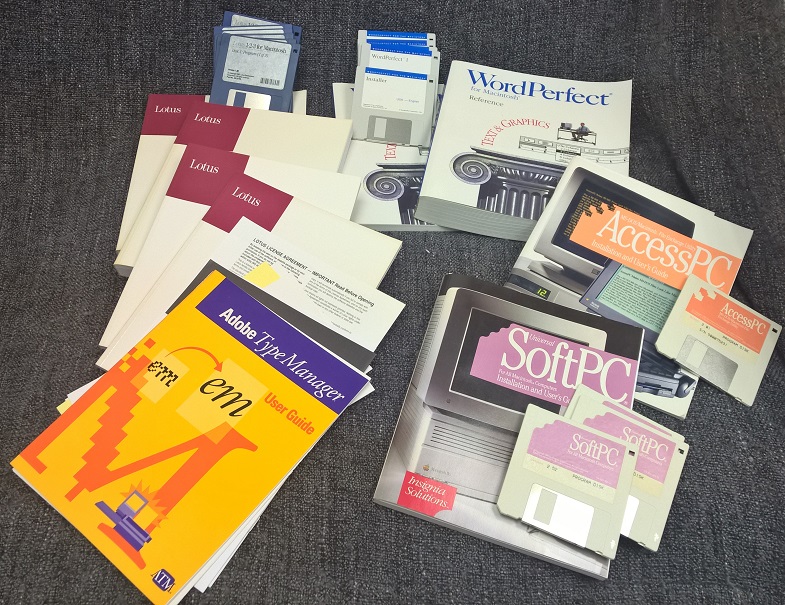
Inside the box is more boxes, and inside those boxes is a rare sight, manuals! Actual printed manuals! That is how you know this is something of near museum quality. I kind of like being able to read a physical book from time to time, and it’s really great.
Oh and incidentally the disks all worked, much to my amazement. I just needed to get a working Macintosh with a drive that can read 800kb disks and an Ethernet card.
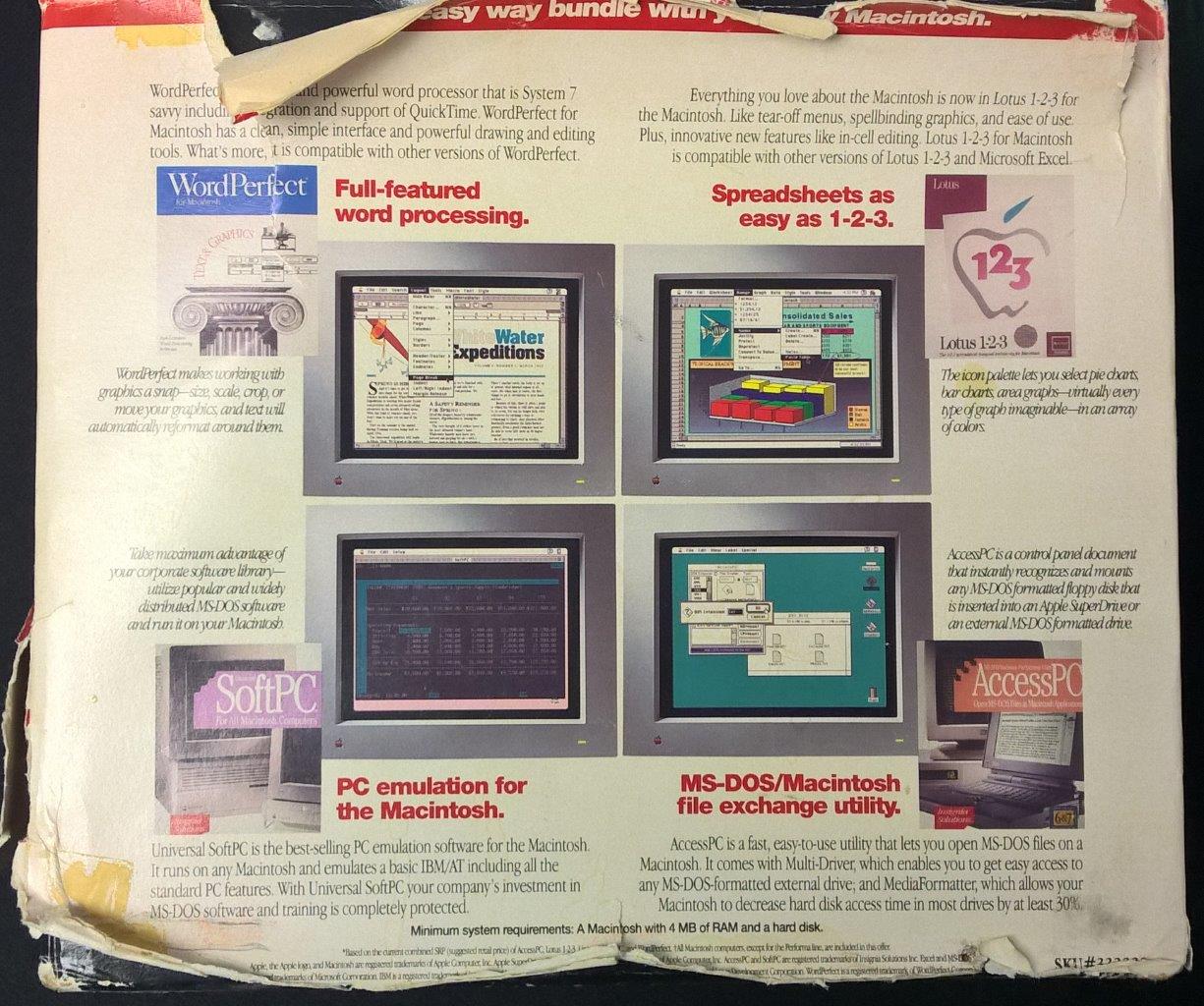
Although it does list four packages, it really is 3, featuring:
AccessPC is simply a FAT driver for MacOS to read MS-DOS floppies & removable media.
So let’s take a quick look!
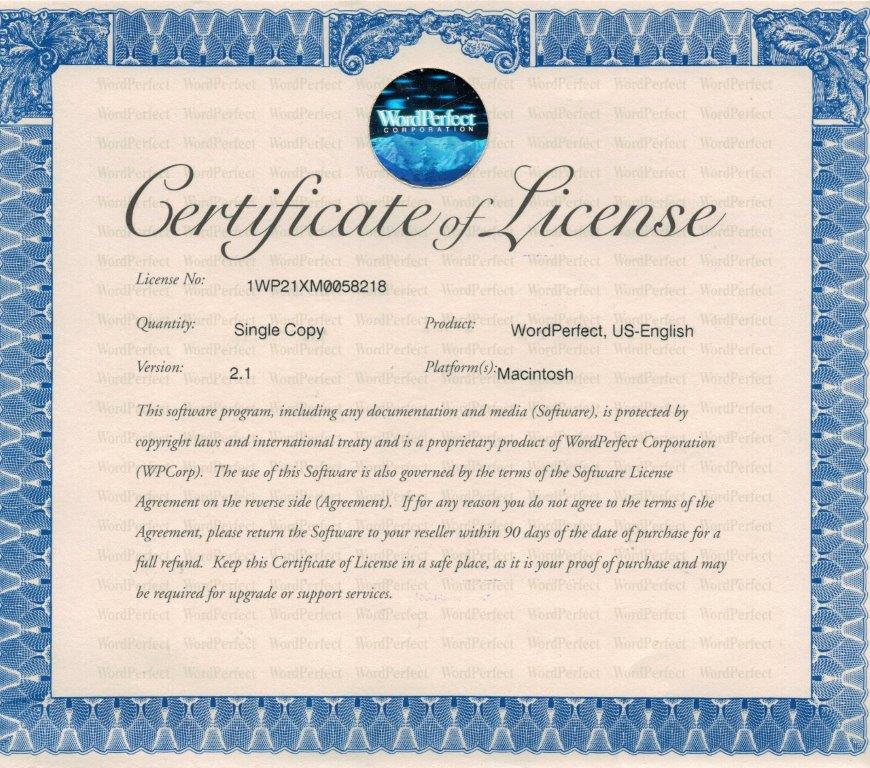
I haven’t seen something like this in a long while, an actual license printed on nice stock certificate stock paper (remember those?!), with a hologram tag. Does WordPerfect even exist anymore? Can I mail this in for an upgrade? Does it even matter?
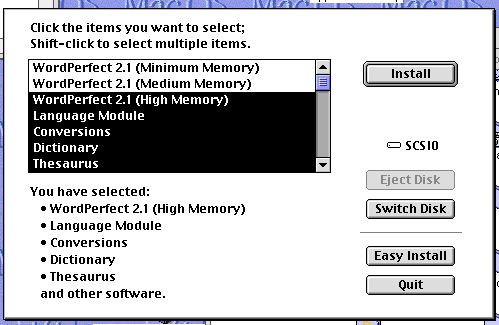
While the install options give the impression that WordPefect is a really full featured word processor once loaded up for some reason it really felt barren.
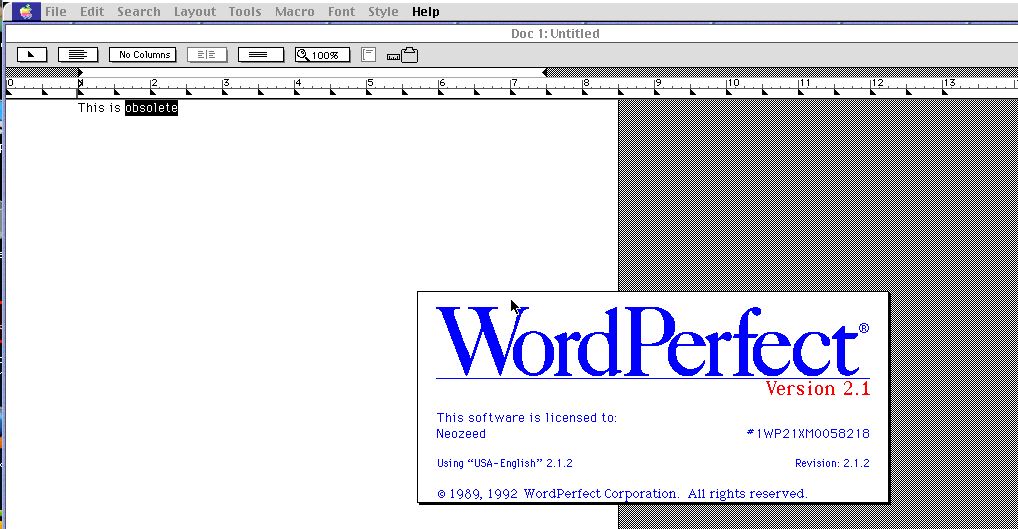
Although it does have the important proofing tools, don’t expect a dictionary or thesaurus to have anything more than the words, no definitions or anything like a style guide. It did ship on floppy and I guess I’ve just become so spoiled living in the future with terabytes of storage and an overwhelming supply of deference media.
Going back to 1992 is a real trip to not only how clean some of the UI elements feel, but just how seemingly feature sparse the more advanced applications feel.
Personally I never really liked WordPerfect so I more so installed it as a curiosity, much like when I had WordPerfect for Unix. I’m the crazy one that likes MS Word.
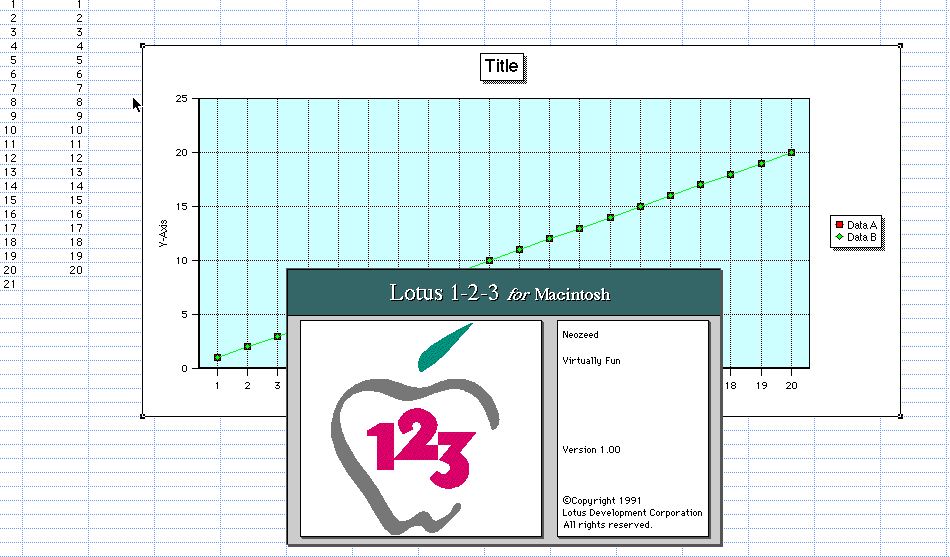
With that said, I went ahead and installed Lotus 1-2-3, and I was really surprised, that the installer was not only really appallingly bad, requiring you to copy the contents to the HD before installing it (so you need a lot of free space), but there was no copy protection at all either on the disks, or in the form of a certificate/serial code. In school I did start with 1-2-3, but with the onslaught of Microsoft Office had quickly moved to Excel, and after 30+ years I really don’t remember much of the slash commands, let alone how to use if effectively. Luckily the menu is okay to walk through, and of course there is Macintosh style menus so you don’t even have to deal with the slash menu if you don’t want to.
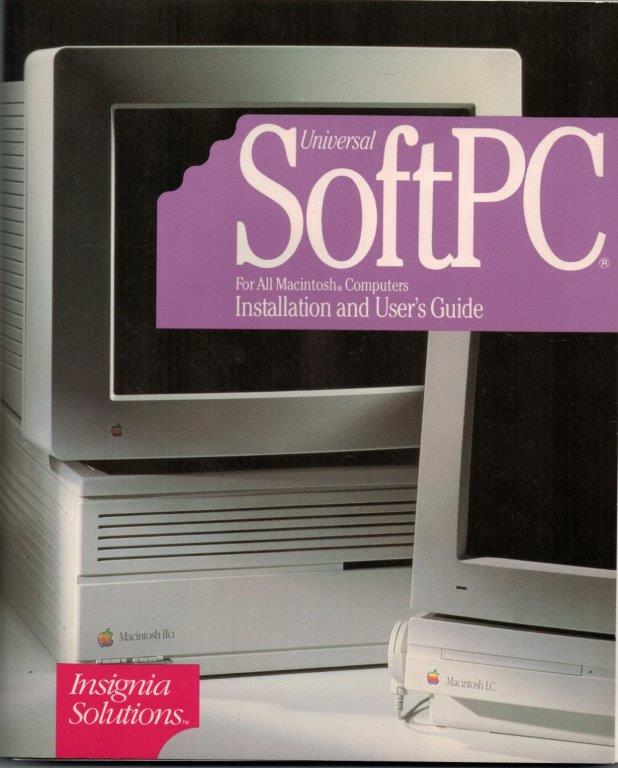
SoftPC didn’t come with a box within the box, just the two manual sets & the disks shoved into the manuals. I doubt it came like that, but this is all I have.
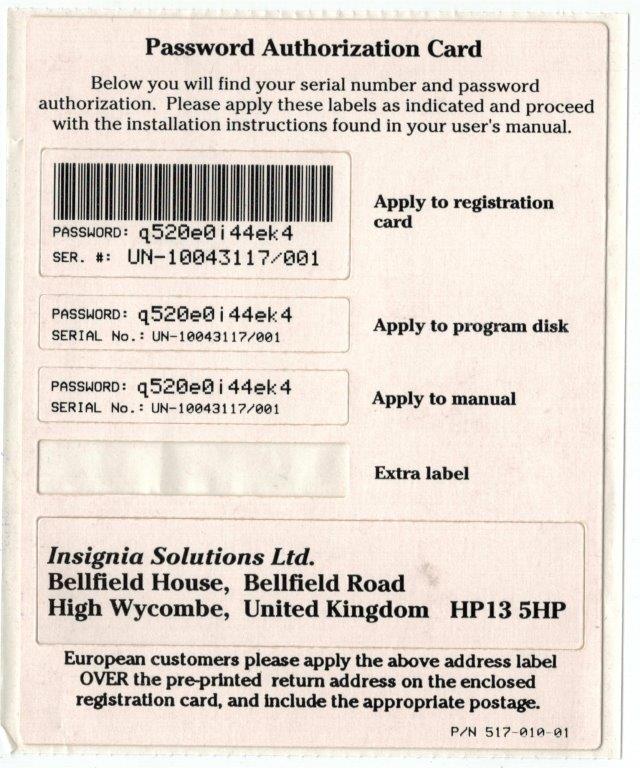
Compared to the WordPerfect certificate, the stickers hidden in the folds of the SoftPC manual just feel cheap. And the years have not been kind as you can see with the discoloration, and the cheap adhesive on them has completely dried off. After I had scanned this they have all fallen off the backing paper. Although I also have version 3.1, I didn’t want to lose this so I’ll just save it for prosperity.
And SoftPC is a great program, although it really is an absolute crutch, allowing you to run PC software on your Mac. Flash forward 30 years, and the industry continues with VMware & Parallels. What is more amazing is how so many leaders in PC emulation completely missed the virtualization market. But most people would think you were a little strange to run a PC on a PC. Or more than one at the same time.
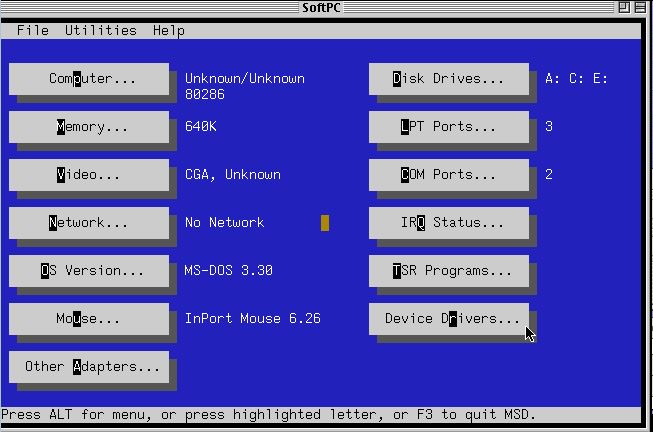
SoftPC emulates a really barebones PC, it only supports a maximum of 640kb of RAM, and the CGA graphics adapter. For anything more advanced you really need to get SoftAT, which supports more options. Or even better, get a copy of SoftPC 3.1, which not only allows more memory but bundles a copy of MS-DOS 5.0 and Windows 3.1
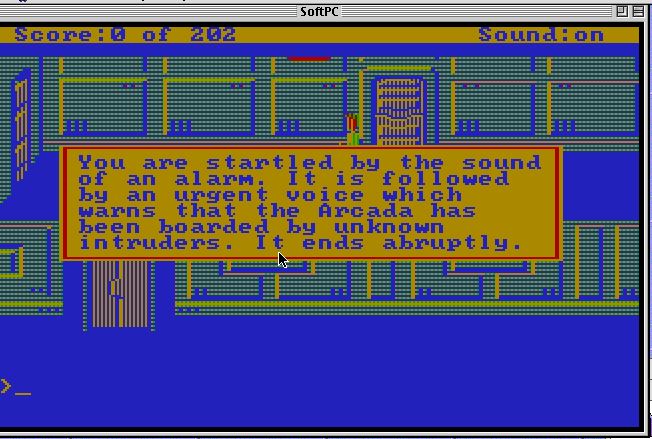
I found the emulation of the CGA kind of lacking when compared to version 3.1Â Although some games like BattleTech render just fine, Space Quest just looks horrible in version 2.52.
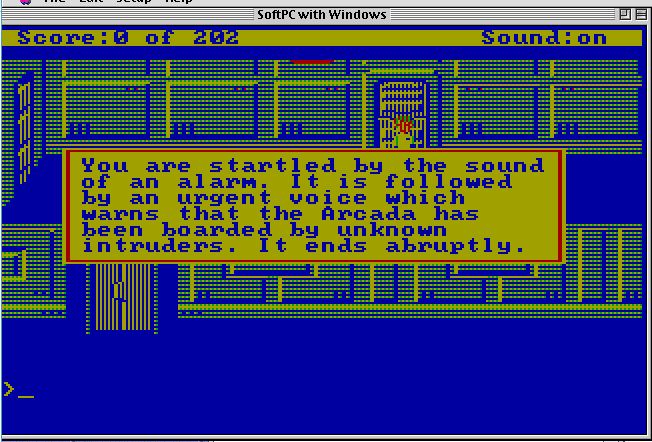
Although to be fair it doesn’t look so much better in version 3.1 either. However 3.1 emulates both EGA & VGA (along with expanded & extended memory) giving a far more richer 286 based emulation solution
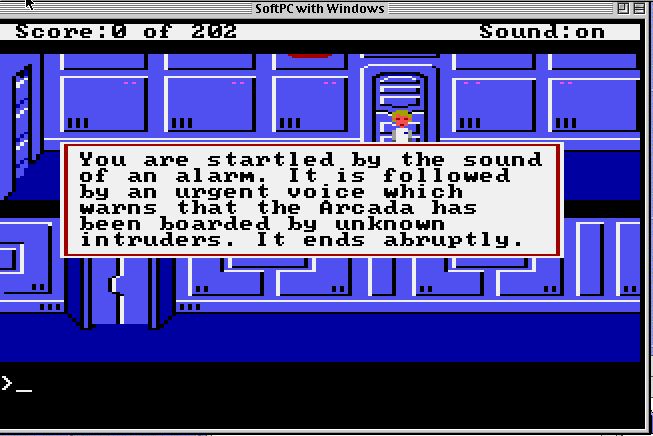
As you can see there really is no comparison to the EGA version.
Although there are far more better solutions today to do PC emulation, for some reason there is always something cool to have an emulator running an emulator.. Sadly the 80386 based emulation didn’t come to the 68000 based platform, instead the later generation emulation was only available to the PowerPC.
I guess it goes to show, but of all the applications I have for MacOS, I enjoy SoftPC the most. I suppose I need better softwares.
And people think Amiga & OS/2 fans are a little crazy!
Wileyfox was the last vendor selling Windows phones and it seems that they there was so much demand that the phone is back into production.
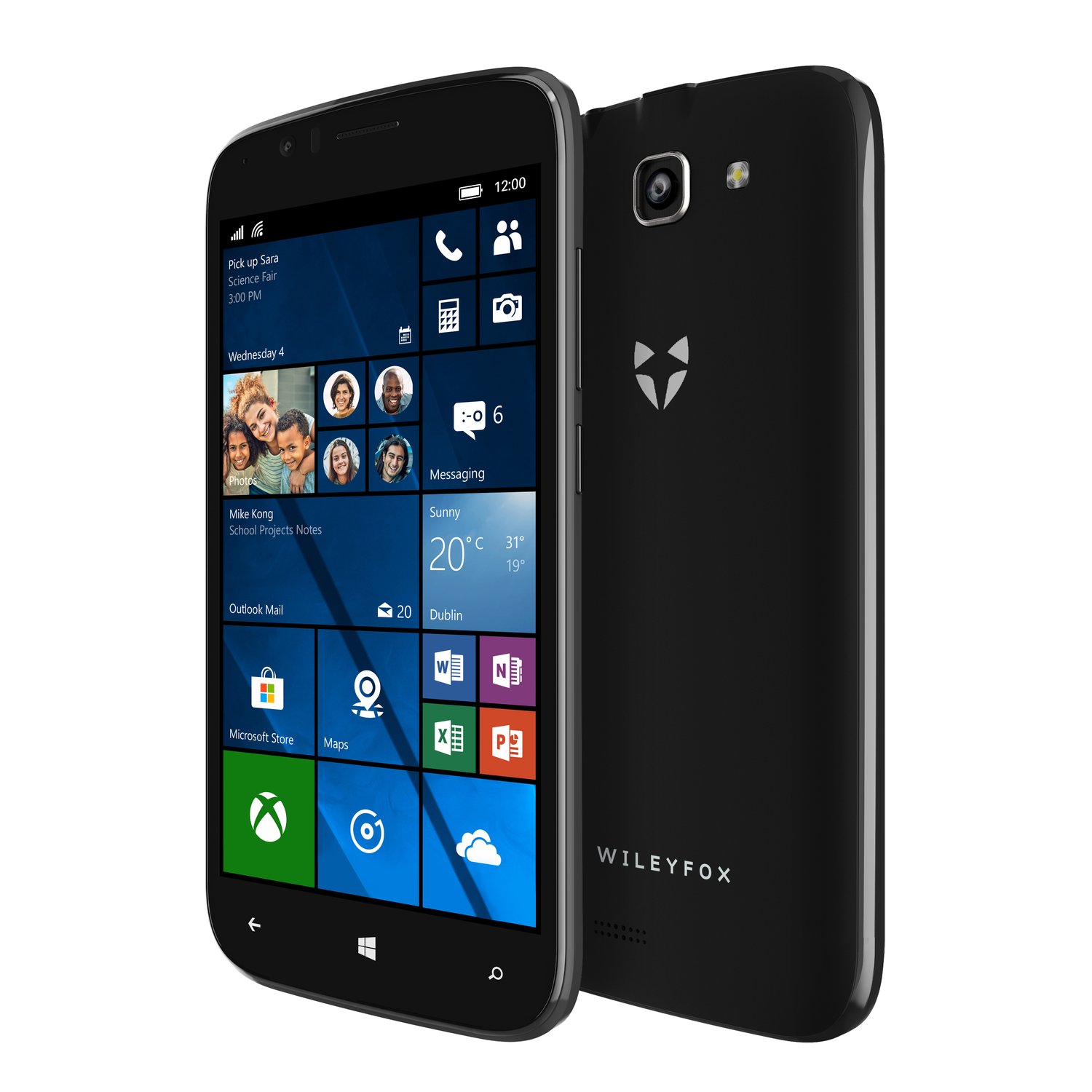
Specs include:
• 5″ HD Curved Screen, IPS Technology, Gorilla Glass 3
• 4G LTE
• Windows 10 Operating System
• Fingerprint Reader
• 8 Megapixel Rear Camera + Dual LED Flash + Auto Focus
• 2 Megapixel Rear Camera
• Qualcomm Snapdragon Quad Core Processor
• 16GB ROM (Storage)
• 2GB RAM
• 32GB Expandable Memory Card Slot
• 3D G Sensor
• Proximity Sensor
• Ambient Light Sensor
Also the price has dropped from £ 199 to £ 79!
Currently it seems that orders are only for the United Kingdom.
AKA accessing SQL Server 4.21 via Access 2016
I’ve been pretty dismayed for the longest while that newer versions of Windows bundle newer versions of ODBC that refuse to talk to any version of SQL Server prior to 2000 (at the moment). Of course if I were ‘professional‘ Id be upgraded to the latest version, maybe even running on Linux. But I’m not, and you didn’t come here for how to upgrade/update but rather how can you use tools from the 90’s in the 10’s.
If you try to use the current SQL Server driver, you’ll get this message. Don’t be fooled, SQL Server 7.0 isn’t supported either (probably because of the SUN vs Microsoft Java debacle), it will only work with SQL Server 2000 or later versions.
It’s been this way since Windows 7, and I’ve just given up and gotten used to having to have a VM to access older databases. That is, until today.
While I was dumping data and moving stuff for my blog (something I need to write about another BCP adventure), I wanted to do a simple Access database to make sure it’s looking sane. And I figured I’d jump down to Windows 95, and load up Office 95. Well sure enough there was no proper SQL Server ODBC driver. Popping in the SQL Server 6.5 CD, naturally there is no ODBC drivers for Windows 95, but rather a 16bit driver for Windows 3.1, and 32bit drivers for Windows NT. I installed the NT version, and was still unable to connect until I installed the SQL client which then let me run WINDBVER.EXE so I could configure the appropriate transport DLL (TCP/IP) and then I could connect.
And this got me thinking, is it possible to just take those DLL’s and move them onto Windows 10? Well naturally that won’t work as the driver sqlsrv32.dll is a system protected file, and you can’t overwrite it without a lot of pain. However this got me to thinking that it should be possible to just tell the system it’s a new driver with a different name.
Looking through the registry I notice that HKEY_LOCAL_MACHINE\SOFTWARE\WOW6432Node\ODBC is where the 32bit ODBC stuff is stored, so this is where I’ll make my ‘OLD SQL’ driver. I simply used the existing one and renamed the driver/setup DLL’s to sql65-sqlsrv32.dll so that way the 2 DLL’s can co-exist without freaking out.
With that done, the key Computer\HKEY_LOCAL_MACHINE\SOFTWARE\WOW6432Node\ODBC\ODBCINST.INI\ODBC Drivers will need a new SZ string saying the ‘OLD SQL’ driver is installed.
I also copied the following files from the SQL 6.5 client into a subdirectory of SysWOW64 so I could configure the transport:
DBMSADSN.DLL
DBMSDECN.DLL
DBMSRPC3.DLL
DBMSRPCN.DLL
DBMSSOC3.DLL
DBMSSOCN.DLL
DBMSSPX3.DLL
DBMSSPXN.DLL
DBMSVIN3.DLL
DBMSVINN.DLL
SQLGUI32.DLL
SQLSVC32.DLL
ntwdblib.dll
WINDBVER.EXE
Now if you are going to use named pipes it’ll just work out of the box. Running WINDBVER you’ll see that it’s set that way by default.
to change it to TCP/IP I coped the files DBMSSOC3.DLL & DBMSSOCN.DLL into the SysWOW64 directory and re-ran WINDBVER, and then selected TCP/IP.
Now we can go ahead and add a SQL DSN. Remember to use the 32-bit ODBC Data Source tool
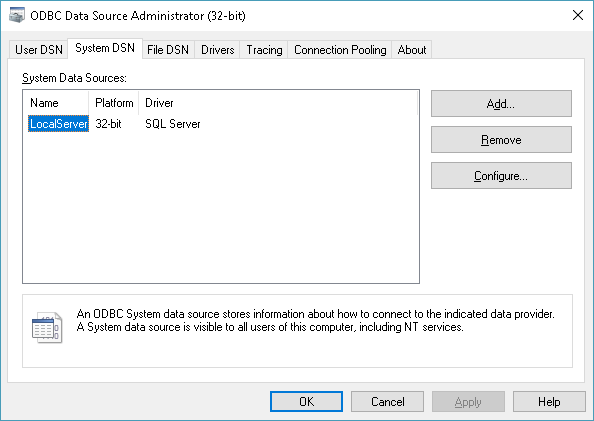
If everything is setup correctly you should see the ‘OLD SQL’ Database driver. Scrolling to the right you’ll see that it’s version 2.65.02.01 dated 7/7/1997

Now we just need to configured the driver. Be sure to hit the Options button and type in the database name, otherwise it’ll just go to the default database. Since I’m just using the ‘sa’ user that would be the master database, but I want Access to instead use the ‘pubs’ database.
Sadly these old drivers don’t have any test functionality. So there is no real way to know if it is working at this point, however I would imagine it should as we have added a regsitery key for the driver, added it to the available driver list, selected (if needed) a transport DLL, and populated the needed fields. The next thing to do is to try to use it.
Start Access, and select a blank database. Go to the External Data tab, and then choose the New Data Source, and the From Other Sources option. This will bring up the ODBC database wizard.
I’m going with linked, as I want the data to be used from the SQL Server all of the time. You will be then prompted to choose the Data Source
You can select the DSN we setup earlier, and then it’ll prompt you to login.
Again I’m using SA because… why not. And now for the moment of truth, if everything is correct you’ll be presented with the list of tables! This means that it’s working!
You can choose to save the password, and if needed select unique fields, or just leave it as it is. Now you should be able to access your SQL 4.21 database!

And there we have it.
If anyone is brave/crazy enough I extracted the driver here:
sql65odbc-files.7z SQL Server 6.5 should not only be able to access 4.21, and 6.0 but I think it ought to be able to access SQL Server 7.0, although I haven’t tested it out yet.
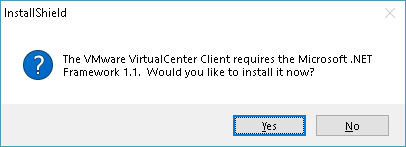
Yes, I know this is crazy but… I don’t know if anyone else would care. Windows 10 (7 & 8 as well, I guess…) include a .NET 2.0 option or a 3.5 which includes 2.0 install but if you need the first real ‘release’ version of .NET v1.1 you cannot install it. And some applications were pretty much hard coded to 1.1, even though the whole point of .NET was to avoid this kind of version/DLL hell.
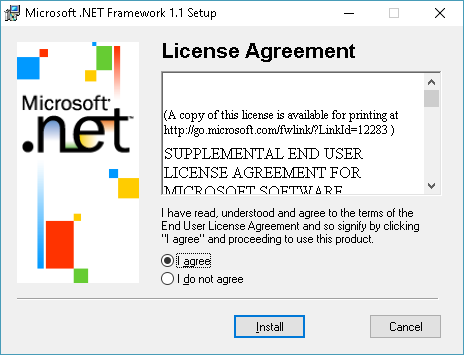
Well, I had come across this great post here on techjourney.net. And yes, it sounds crazy, but it works!
All you need to do is download the version 1.1 framework + SP 1, and slipstream the SP 1 patch into the directory and run the setup..
I’ve gone ahead and combined the .NET v1.1 framework + SP1 into this zip file: dotnet1.1-withsp1.zip, so you can bypass those steps, and just go. No more bizarre errors about the debugger not finding itself and crashing out the installer.
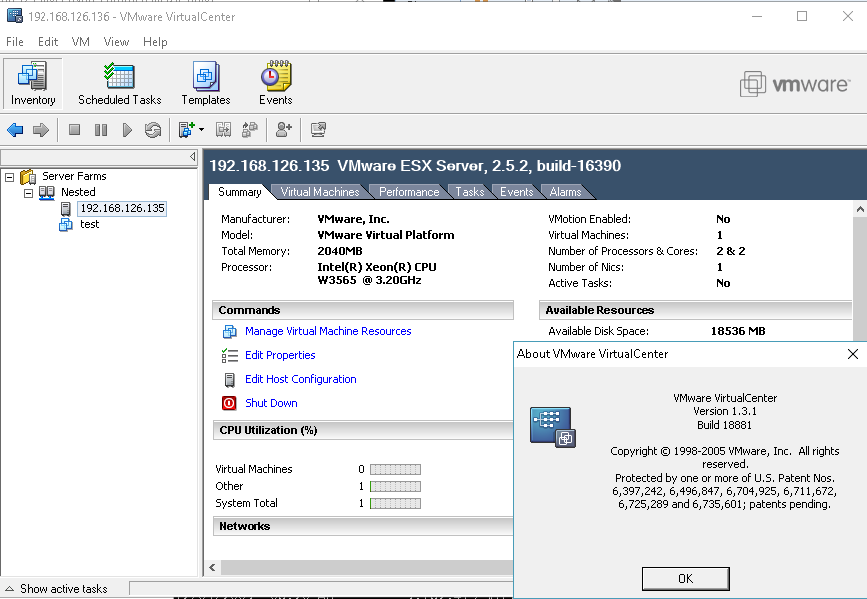
And now I can manage my nested VMware ESX 2.5.2 cluster on Windows 10 natively as managing from a VM just wasn’t the great experience I’d been hoping for.
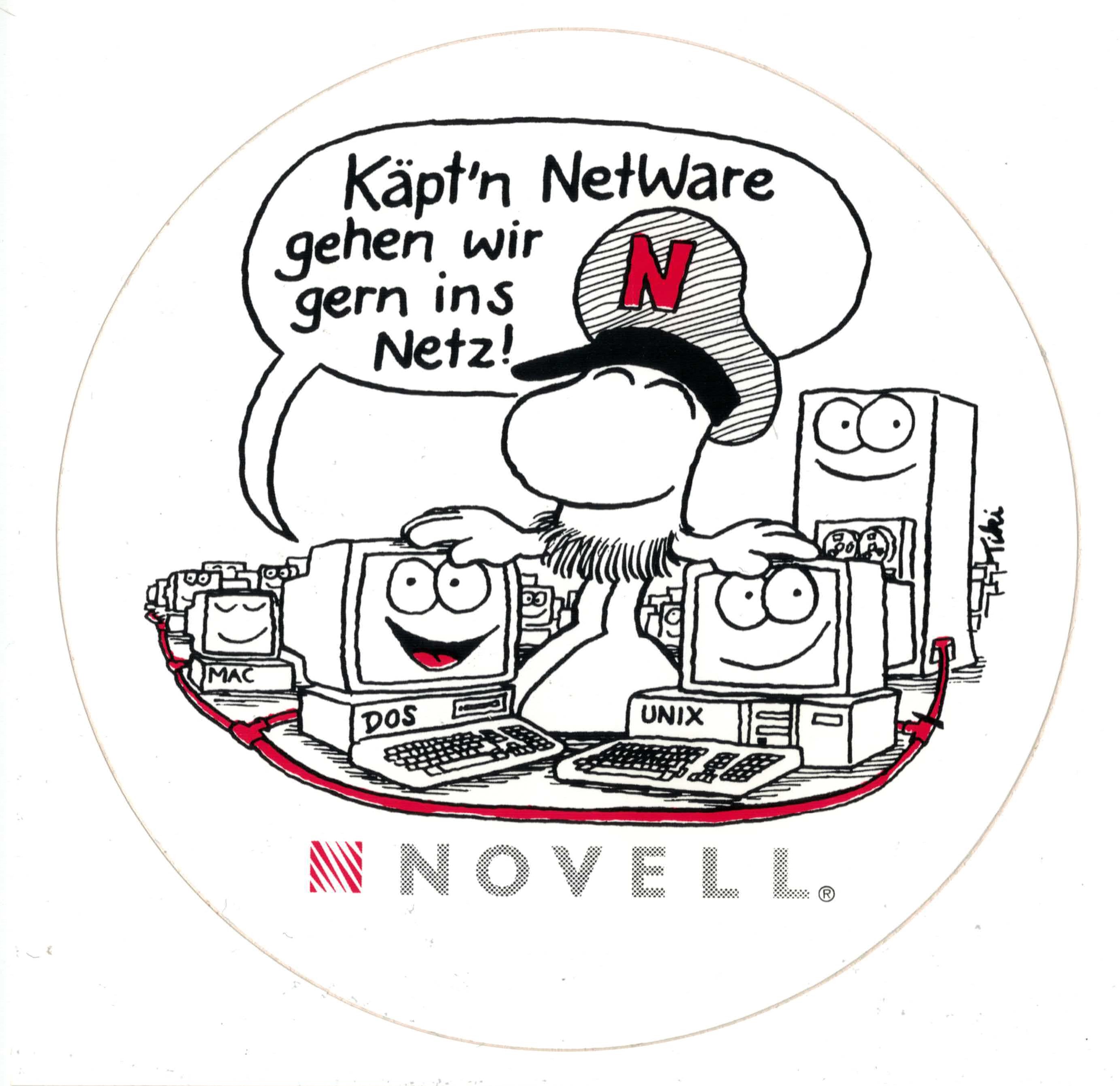
Remember when the Novell Unix client was everywhere? Remember when IPX/SPX was a thing?
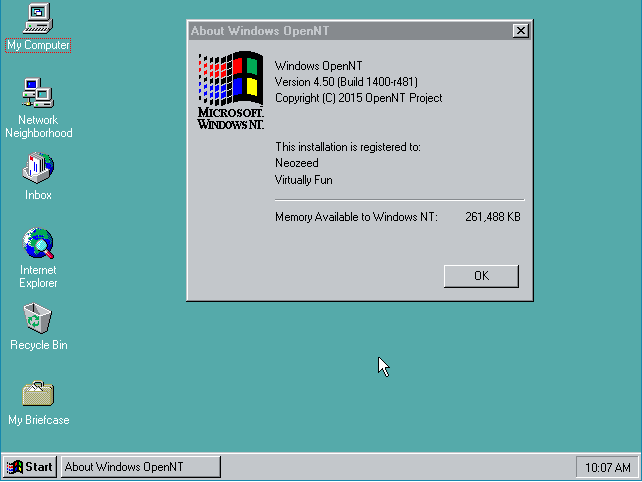
It’s been a few years since Tenox had mentioned OpenNT 4.5, and in that time the project pages, repositories and well just about everything has vanished. It seems that the hardest thing to do with OpenNT had become finding it.
Then I found this over on vetusware, and with my curiosity piqued, I thought I’d check it out.
As mentioned the first thing to do is combine the parts, and create the single 7zip file, and then extract that.
copy /B "OpenNT45(Source).z00" + "OpenNT45(Source).z01" + "OpenNT45(Source).z02" "OpenNT45(Source).7z"
Extracting that will give a simple ISO file, weighing in at 1.7GB!
While not obvious at first, there is a readme in the ISO that provides instructions on how to compile it. Basically it boils down to a few main points:
So with those points basically figured out after the fact, let’s go!
The first thing to do is either create a VM to compile this in, or just xcopy and go. The big requirement though is that it must be a 32bit version of Windows, as part of the build process requires the ability to use NTVDM. For simplicity sake, I chose Windows 2000 server, so I could allocate 2GB of RAM, and 4 CPU cores. During the build it doesn’t use that much memory, cores are more so important during various phases of the build that can seemingly use any and all cores, while various other parts only run on a single core.
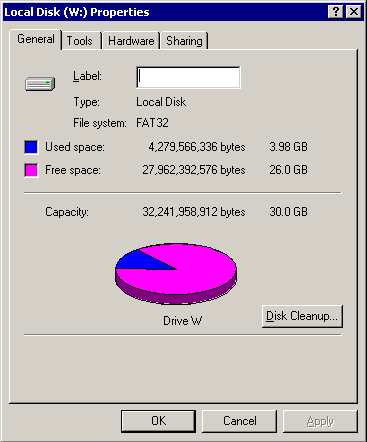
I chose to use a separate ‘C’ drive, and ‘W’ drive for the 2000 VM. With no idea how much space to give it, I setup a 32GB W drive, which after the build takes up just under 4GB of space. Â
With the VM installed, and the W drive formatted, and the contents of the CD copied over, it’s time to start the build.
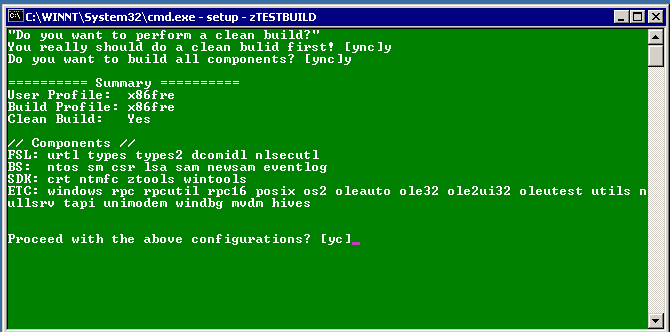
So basically you just answer ‘Y’ to zTESTBUILD.cmd and it’ll do it’s thing. For me this took about 42 minutes for this to run until it failed, as expected.
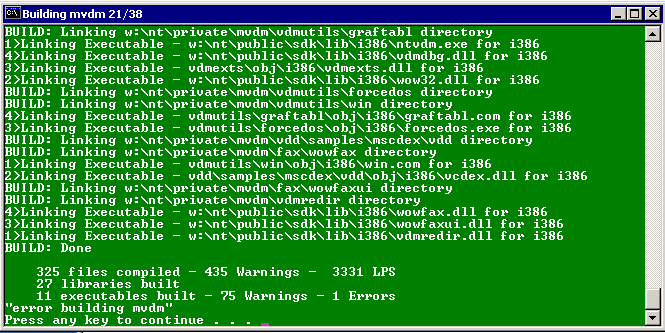
Looking at the \binaries\nt directory there was now 1,274 files currently built. Naturally with the failure this is not a complete build.
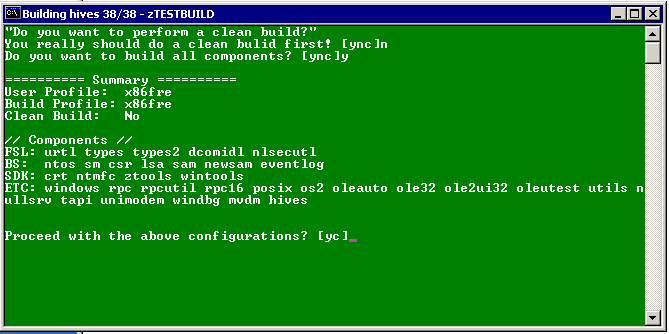
After this failure you then re-run zTESTBUILD.cmd but this time answer ‘No’ to the clean build.
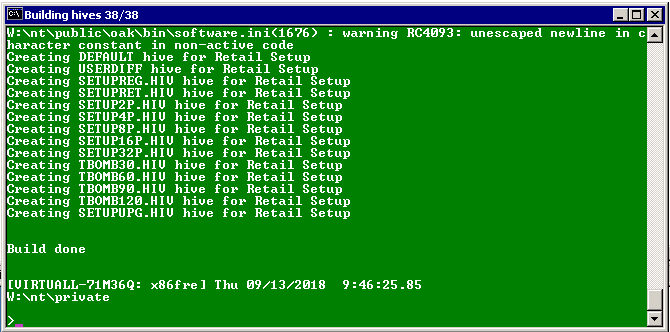
This step took about 15 minutes to complete.
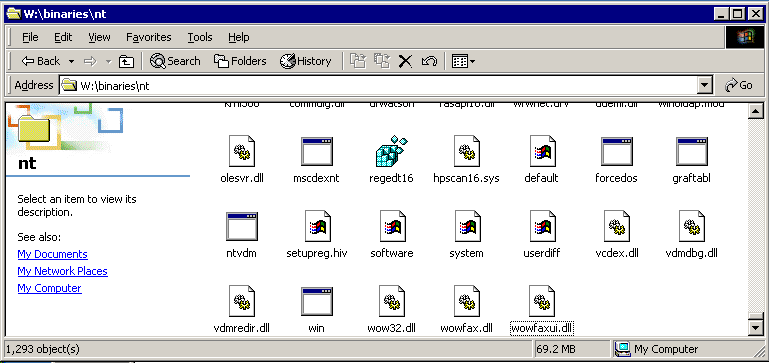
Checking the binaries\nt directory there is now 1,293 files and looking at the entire directory there is 2,624 files taking up about 120MB of space.
With the OS compiled, all that remains is to create an install CD and boot it up. running \cdimg\genall.cmd will create the ISO image.
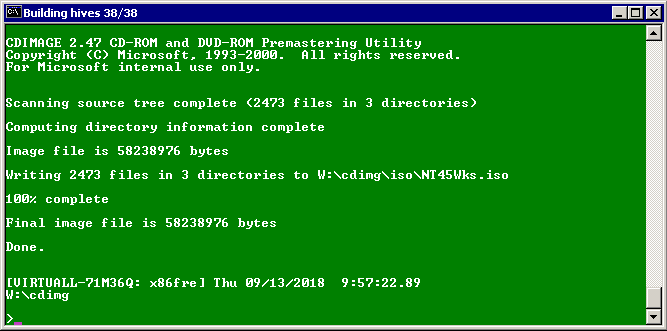
This will compress almost all the files, and took another 15 minutes to create the CD. After this is all done it’s just a matter of setting up a VM to run the NT45Wks.iso file.
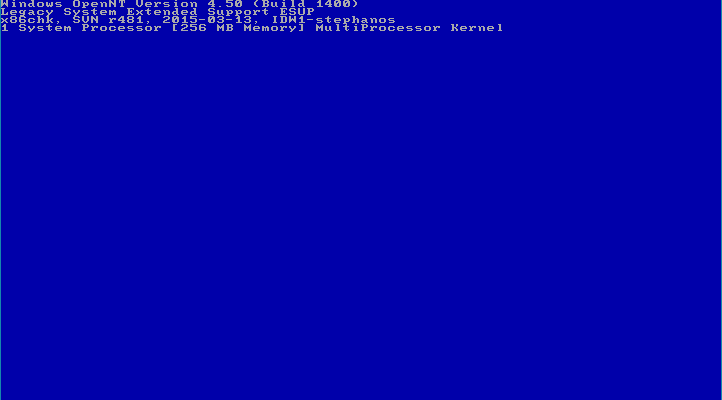
The first thing you notice is the extra banners on OpenNT 4.5, when compared to a retail copy of NT 4.0.
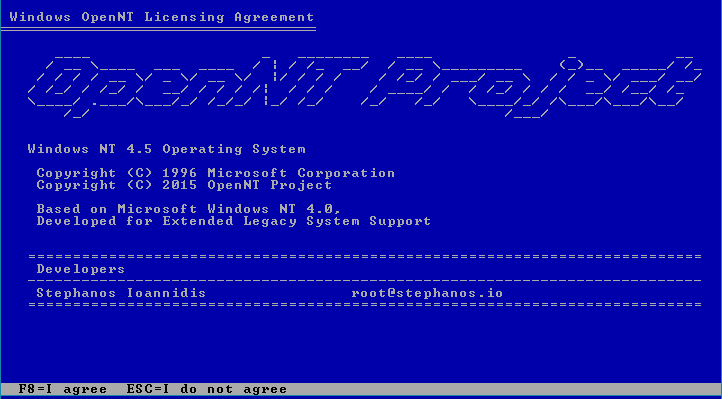
And of course the different branding during setup. One of the nice things about OpenNT is that it can format filesystems directly as NTFS, instead of the old way of first creating a FAT partition, and converting it to NTFS. This ought to bypass all the limitations of disk/partition sizes for the older NT.
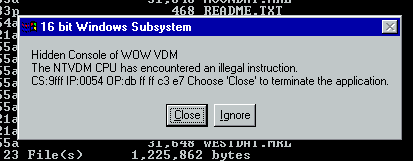
Running OpenNT 4.5 on VMWare seemed to run the Win32 stuff okay, although Win16/WOW stuff immediately crashed, and MS-DOS was incredibly slow with screen redraw issues. I know that NT 4.0 builds prior to SP 6 have issues with many newer emulation/hypervisors even when CPU levels are set to regular Pentium.
MS-DOS DPMI stuff like DooM are incredibly slow, and seemingly lock up when launching.
Oddly enough the OS/2 subsystem works just fine.
So there it is, the nearly vanished ‘OpenNT 4.5’.